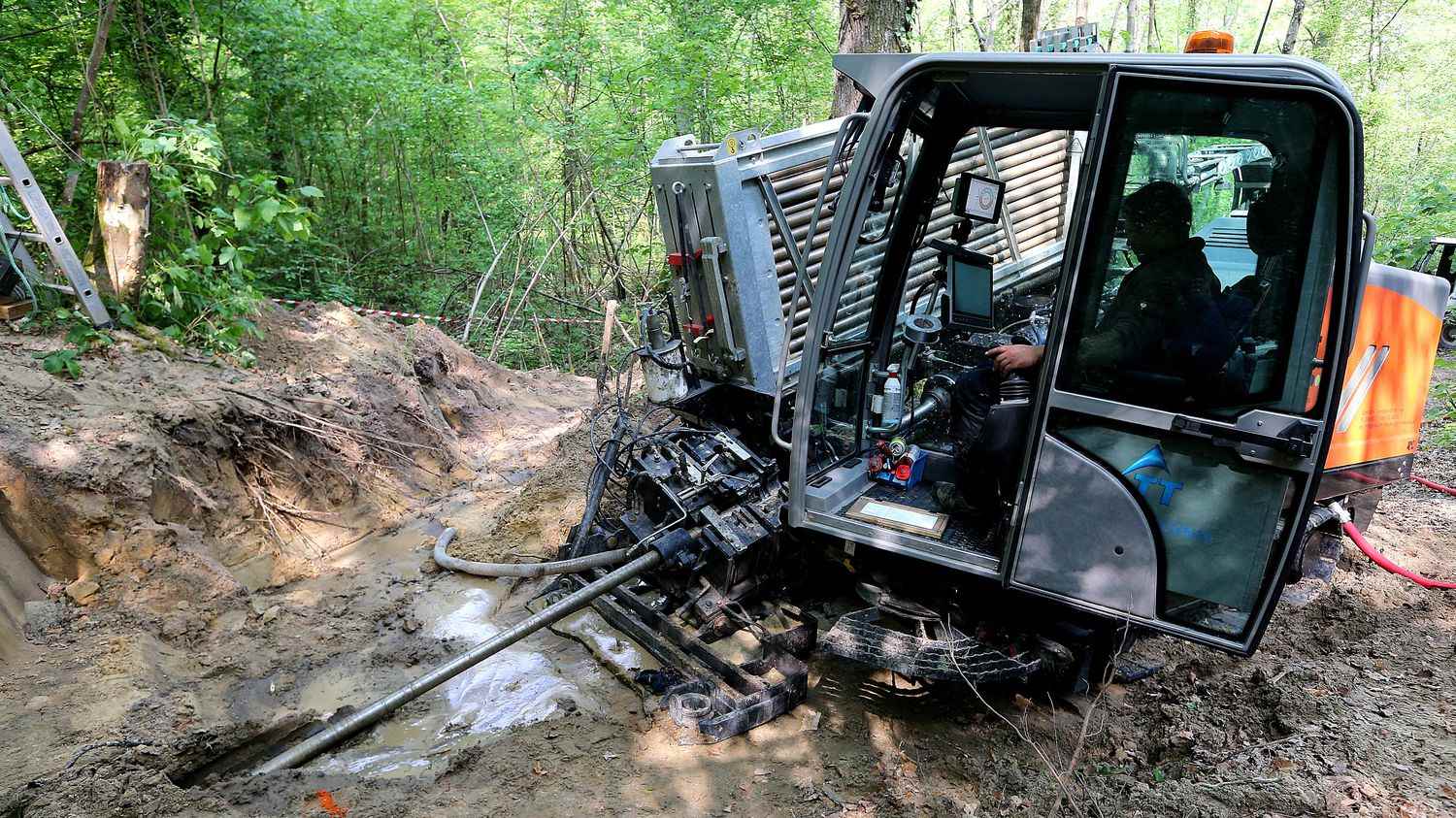This is an episode of the famous battle of the Chemin des Dames, during the First World War, at the beginning of May 1917 in the Aisne. After an artillery fire, dozens of German soldiers are immured alive in the tunnel which served as their shelter and which collapses on them. Most will never be able to get out. One hundred and five years later, the German War Graves Office searched and found the trace of this buried tunnel which serves as their tomb and where the names of those who died can be engraved. The end of these excavations took place on Thursday 5 may.
We walk along a forest path lulled by the song of birds. Today, it is an arboretum, there are 110 years ago it was still a town: Craonne. She has been busy since 1914 by the Germans and was destroyed by artillery fire. At the beginning of May 1917, General Nivelle prepares a new offensive to dislodge the Germans from this plateau which dominates the entire region. “The Germans called it the Winterberg, certainly in reference to a mountain in Little Switzerland in Saxony which looks a lot like this plateausays Franck Viltart is the director of the Caverne du Dragon, the Chemin des Dames museum. 5 May 1917, the 18th infantry regiment, a South West regiment, attack. The losses will be terrible for this regiment to take this edge of the plateau but they will only be able to cling to the edge. The north side will still remain on the German side, where the entrance to the tunnel is.”
A few hundred meters higher, we find the Winterberg tunnel hit by a shell which hit an ammunition depot the day before the offensive. Since then between 70 and 150 German soldiers have remained prisoners and on Thursday we finally found a trace of this tunnel, in fact rather a gallery of 200 m of which only a small part remains. “Starting from the bottom of the hill, we started with a horizontal hole that was 60 m long approximately to detect the cavityexplains Thomas Schock, in charge of excavations at the German War Graves Office. It’s a machine somewhat identical to those used to look for oil and here, as it’s sand, it went relatively well.”

After four days of soundings and drilling, the mini-camera slipped to a depth of 16 m makes it possible to distinguish what looks like a tunnel shoring, although the saved part of the shoring is drowned in murky water and there is no only a small part of the tunnel which was about 200 m long.
But surprise, we will not go further. Arne Schrader, director of excavations at the German War Graves Office, decided to stop there for now: “Our mission was to find out if this tunnel still existed. We now know, with a very high probability, that this tunnel exists. The second mission was to check whether the tunnel can be accessed by grave robbers and it can be said that a grave robber will never be able to access the dead. Of course we would have liked to be able to see inside the tunnel, that was not possible but we know that the dead are safe.”
Protecting the grave of the dead is the main goal of the Germans. We feel that on the French side we would like to go further. In the meantime, to learn more about the agony of the soldiers trapped there remains the story of historians and some letters that have come down to us. “There was a stale air that prevented breathingsays Franck Viltart. In addition, there were putrefactions because we stayed there for days and days. It was terrible smells in very small environments because the Winterberg tunnel is not even two meters between each wall, it’s very narrow. When you imagine that the entrance has collapsed, it’s terrible, because you know that you have only a few hours of oxygen left in front of you.”
“We have the testimonies of soldiers who see their wounded comrades die. Other soldiers try to go through exits at all costs, and try to go back up, to scrape by falling ladders, it is absolutely frightening. There are also stories that explain that in the end, some could not bear it, they had to commit suicide inside the tunnel.”
Franck Viltart, manager of the Caverne du Dragonat franceinfo
An exhibition bringing together all the objects found around the tunnel will be visible in Karlsruhe and at the Chemin des Dames museum at the Dragon’s Cave.
